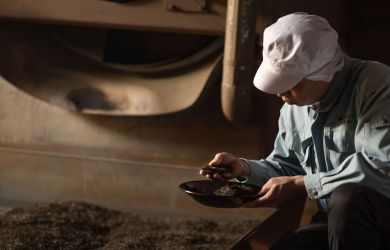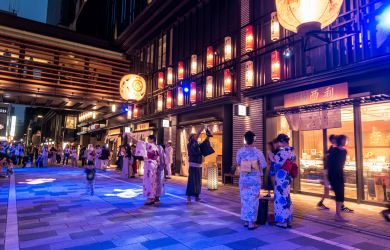
October 26, 2012
Song of the Rightwing Soundtruck
Tunes the uyoku use to shatter our calm
By Metropolis
Originally published on metropolis.co.jp on October 2012

Some Tokyo friends joke about “freedom of screech.” A sense of humor is required to balance the outrage when rightwingers’ gaisensha soundtrucks come blaring by (disclosure: I live next to a major thoroughfare).
The uyoku are most active on national holidays, but have no scruples about shattering the calm just about any Sunday morning as you settle into your first cuppa. With the same license to broadcast messages as political parties, they skirt Japan’s noise pollution laws by turning down the volume when the police are nearby.
But what exactly are these nostalgic wartime tunes favored by the rightwing? “The songs are quite popular,” says German journalist Andreas Hippin, who has written extensively about the uyoku. “When I was riding with them they just had one selection of songs that they would play again and again.”
One of the most commonly broadcast songs is “Doki no Sakura” (“Cherry Blossom Classmates”). Otherwise known as “The Kamikaze Song,” the stirring composition features lyrics by poet Yaso Saijo that liken the ill-fated Imperial Japanese Navy pilots to sakura petals that will “meet one day again at Yasukuni Shrine.”
Anthropologist Emiko Ohnuki-Tierney describes in her book Kamikaze, Cherry Blossoms, and Nationalisms: The Militarization of Aesthetics in Japanese History how Japan’s traditional romance with the brief-lived sakura blossoms was repurposed by propagandists to indoctrinate a generation of wartime youth into self-sacrifice, a task well accomplished by “Doki no Sakura.”
[youtube]-BoozeA5D9g[/youtube]Another standard is “Gunkan Koshinkyoku,” or “Warship March.” Composer Tokichi Setoguchi (“The Japanese Sousa”) wrote the bracing orchestral piece in 1897, soon after the first Sino-Japanese War. It’s an anodyne march not far in tone from “The Stars and Stripes Forever” or “Rule Britannia”—and the song remains official music of the present-day Japan Maritime Self-Defense Force, the successor to the Imperial Navy.
Also at the top of rightwing playlists is Isao Hayashi’s 1939 “Shussei Heishi Wo Okuru Uta” (“Warriors’ Farewell Song”), a typically inspirational tribute to valorous young soldiers. Like many Japanese war songs, it hews to a style termed ryukoka (“popular songs”), which ironically takes Western classical orchestral music as its model. Even as the Japanese military was fighting the West, it seems, Japan was using Western systems and art forms to further its cause.
Many war songs (read 軍歌 and pronounced gunka) sold well, and were played on programs such as the widely listened to radio show Kokumin Gasshou (“National Group Singing”). Hayashi and others were among leading composers of the era who wrote them—some apparently out of patriotism, and others because they were forced to.
Certain composers came to be criticized as militarists in the post-war era when their songs became symbols of Japanese aggression. Others had long and illustrious careers, such as Hayashi, who appeared on NHK’s year-end Kohaku program no less than 11 times.
[youtube]L_MCBwKUMQo[/youtube]
Judging by the many songs posted to YouTube, frequently with footage of warships or soldiers in the background, Japan’s war music still resonates with large numbers of people. The majority of comments seem to express nostalgia for prewar Japan’s bushido warrior spirit, condemnation of the country’s current course or scorn for victor’s justice.
Some foreigners take an interest in Japanese war songs as well. One viewer of “Gunkan Koshinkyoku” from Hungary expresses admiration, but notes differences between Japanese and Hungarian war songs.
“It is beautiful but strange,” the writer says. “The WW2 songs of my country [are] usually about soldiers that go to Russia, kick some commie ass, win the war, restore Greater Hungary, but then return safely and live peacefully with their loved one[s]. But all of these Japanese songs are about that on the battlefield death is certain and good. So sad…”
[youtube]HmpQF0jFcJo[/youtube]
Military music from the ’30s and ’40s played to ear-rending levels, or even the occasional enka or anime theme song the rightwingers use to spice up their playlists, is probably not most modern-day Japanese people’s cup of tea. Yet its popularity on YouTube speaks volumes. Japan’s war songs might just hold a greater appeal to many Japanese than you would imagine.
“My suspicion is the uyoku are not so extreme as they seem,” Hippin concludes. “Their way of expressing things is extreme but some of their ideas are very common in Japan.”





